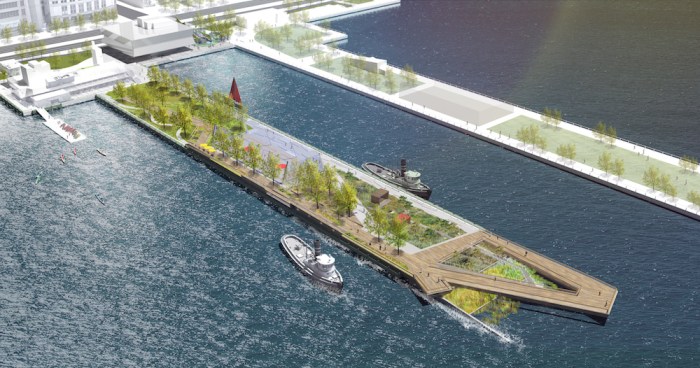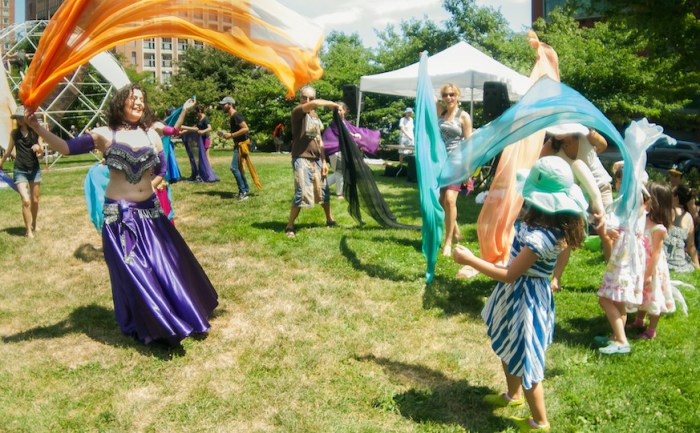2018 marked the 20th anniversary of the Hudson River Park, and it was a big year for the four-mile waterfront on the West side of Manhattan.
The park is the longest riverfront park in the United States, but though waterfront space is coveted, this area wasn’t always aesthetically pleasing. In the park’s early years, it was full of decaying piers and parking lots. But the Hudson River Park Trust, created to design, build and maintain the park, has been changing that.
In 2018, the trust planted more than 16,000 flowers and 300 trees and shrubs this year; composted 75,000 pounds of local food scraps; removed nearly 1,000 pounds of macroplastics (300 pounds more than in 2017), diverted more than 400,000 pounds of organic waste from landfills and hosted 177,000 people for 781 events, according to a year in review report.
“I think the 20th anniversary is a way to reflect and to think about where we’ve been and where are we’re going,” said Noreen Doyle, executive vice president at Hudson River Park Trust.
“Where we’ve been is to take a former primarily no longer used industrial property and convert most of it, at this point, into incredible public park space,” she said. “But then once you’ve reached a point where a lot of people are using the parks, you’re always looking at ways to improve it and make it better and what’s the next generation of thinking.”
Hudson River Park attracts 17 million visits a year and provides important public space, she added, for some of the most historically underserved communities.
“One key aspect is to serve as the front yard-backyard home park for our neighbors,” Doyle said. “Another aspect is, I think, that there’s an elemental need that people have everywhere to connect with the …landscape of water. It’s where people can watch sunsets, where people can connect with the water. Until Hudson River Park, it was difficult, if not impossible, at most places along this four-mile footprint for people to make direct connection to the water.”

A sunset seen from Hudson River Park. Getty Images
Access to public parks and green spaces has been shown to reduce stress and mental health, improve mindfulness and creativity, increase exercise opportunities and generally put people in a better mood.
Hudson River Park and environmental benefits
But beyond those benefits, the Hudson River Park Trust says this waterfront public space helps the environment, as well. The 2018 initiatives were more than just aesthetic, they were meant to promote sustainability and scientific programming.
“The Hudson River Park Act created, side by side with the park, the Hudson River Estuary and Sanctuary — that is the 400 acres, roughly of water that is part and parcel of the park area,” said Doyle. “So there’s always been an effort to do construction in a responsible way, and the law contains a lot of protections for the river already because it’s an incredibly important habitat not just locally, but nationally, for many fish species.”
Hudson River Park is home to more than 70 different types of fish, including the white perch, bluefish, striped bass, oyster toadfish and American eel, as well as 85 different species of birds and insects.
Some of this year’s programming at the park, like the Community Compost Program and the Estuary Lab, is meant to help New Yorkers make the connection between the waterfront they’re enjoying and their own environmental habits.
“I think we can educate people about why they shouldn’t flush something down [their] toilet, because it’s going to come out into the river system,” said Doyle. “There’s a real and deep connection between how we can make more people aware that what they do in their homes, in their offices, when using the park matters in terms of how we can coactively support the environment.”


















